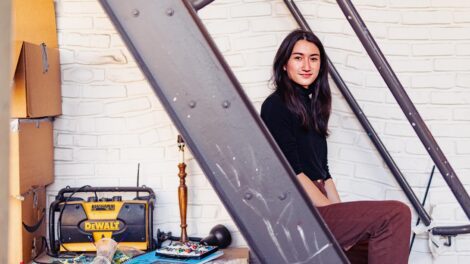Scholarship program enables student photographers, painters, and musicians to develop creative skills and inspire campus conversation
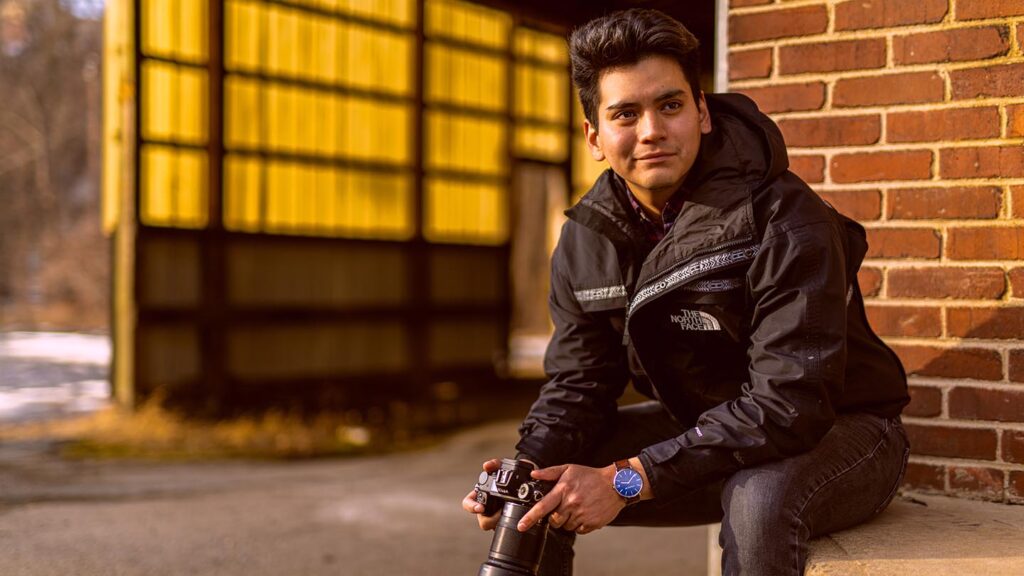
CaPA supported Brandon Marin’s passion for photography.
By Stephen Wilson
Photos by Adam Aktinson
The Maggin Creative and Performing Arts Initiative, known affectionately as CaPA, is a unique offering at Lafayette, supporting a range of artists—students who are motivated to work professionally in the arts as well as students who don’t really see themselves as artists. But all are united to make work, support each other, and engage the campus community through events and dialogue around issues presented artistically.
CaPA provides funds to support each scholar with the tools needed to produce his, her, or their work, thanks to the generous support from Bruce Maggin ’65 and Jackie Maggin P’02.
Leading the scholars are Nestor Gil, associate professor of art, and Karen Marmaras, arts grant coordinator.
“With CaPA, every effort begins with the scholar,” says Gil. “The scholar has an idea, produces a proposal, and executes or produces material, be it a song, an exhibition, a dramatic or cinematic production, the written word, dance, the list goes on. But in every case it begins and ends with the scholar. Along the way, we connect scholars to advising experiences with professionals from the ‘creative and performing arts’ disciplines across the College. Yet it is the scholar’s desire to participate in the creation of a cultural experience that, by extension, supports our entire community as an artistic, creative space.”
Meet a few senior scholars and learn about what CaPA has meant to them.
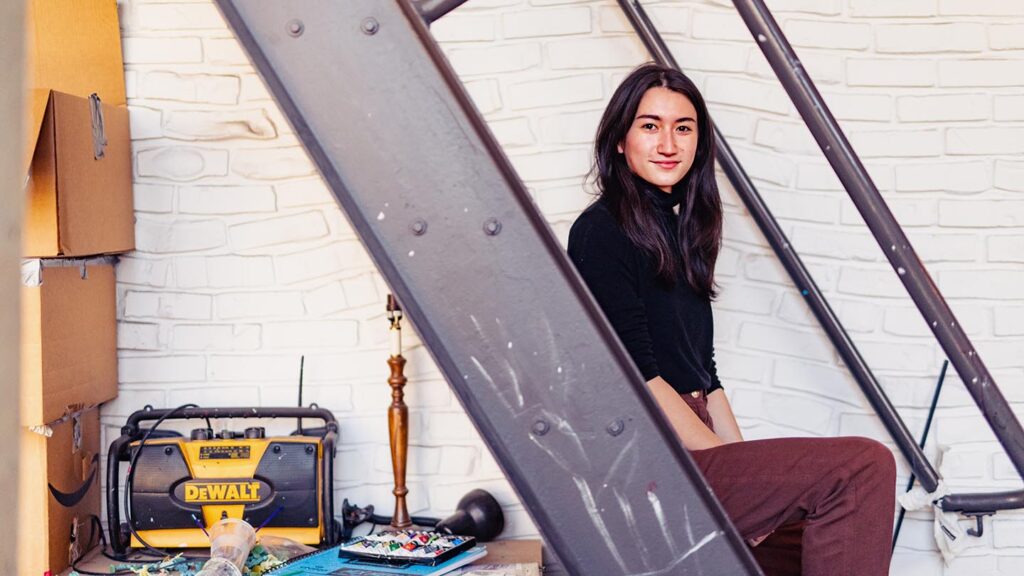
Erika Nally ’22
Erika Nally ’22
Art and architecture
Finding CaPA
The academic journey changed for this mechanical engineering major at the end of her first year when she took a sculpture class with Gil, who recognized her potential and nominated her for CaPA. More than just joining the program, she decided to put art at the forefront of her education, making it the sole focus of her undergraduate degree and not relegated to a creative hobby. Plus she found ways to incorporate engineering and design into her architecture studies.
Using CaPA
Nally purchased materials like a projector and digital camera to help with her work as a painter. When COVID was at its peak, Nally was living in Easton and used some funds to rent a car so she could drive to Durham Press, a limited edition fine art publisher, where she worked as a woodblock printmaker. “I was working with fine artists and was able to experience what an art degree can mean professionally, which in turn advanced what I was making here as a student,” she says. Nally plans to work there after graduation.
CaPA Value
“The exploration I was able to undertake over the last three years is exciting,” she says. “But CaPA is people—students who are energizing, inspiring, and eager to discuss ideas.”
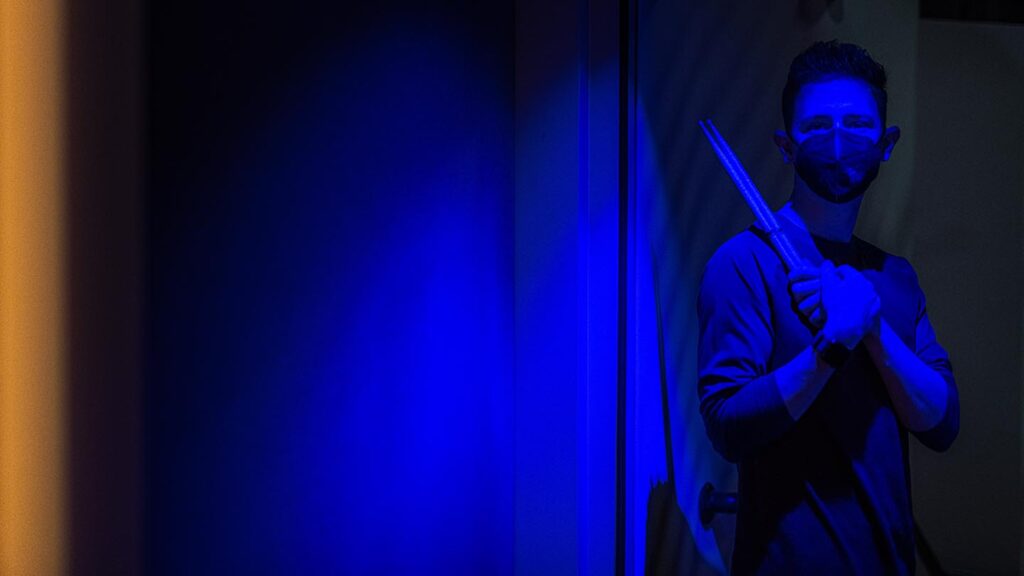
Jordan Leiber ’22
Jordan Leiber ’22
Electrical and computer engineering
Finding CaPA
As a member of the jazz ensemble during his first year, Leiber heard about this “mythical” program from piano, bass, and trumpet players who were scholars. As a sophomore, J. Larry “Doc” Stockton, professor of music and chair of the music department, got him in the door.
Using CaPA
As a member of the jazz ensemble, jazz combo, percussion ensemble, pep band, and pit orchestra, drumming keeps Leiber busy. He has used CaPA funds to help him purchase a professional drum kit and cymbals as well as a quieter electronic kit (yea, headphones!). But COVID slowed his performance schedule. So he took matters into his own hands and formed a virtual jazz band when he was back home for remote learning and drew upon musician graduates from his local high school for performances. Upon returning to campus, he played virtual and outdoor shows, and plans a spring pop-up concert.
CaPA Value
“I didn’t grow up in a household that could afford the best, so I played for years on a rinky-dink set,” says Leiber. “To have the funds to purchase the professional equipment I could only dream about helped bring my sound to a whole new level and changed the way I play. It is awesome to share my performances with others and see the different artistry on campus as performers, writers, and visual artists explore their own styles and journeys.”
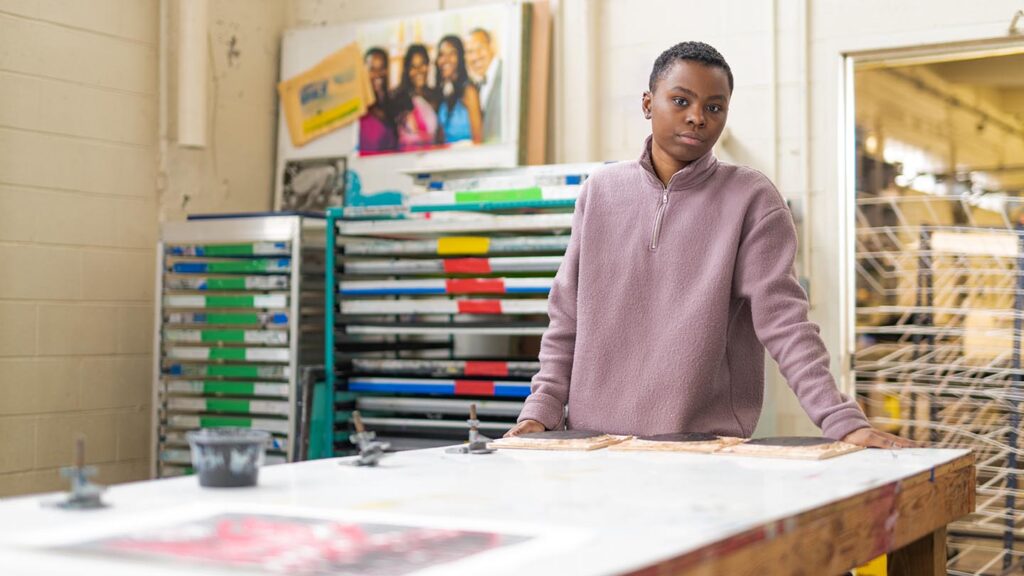
Kymble Clark ’22
Kymble Clark ’22
Art
Finding CaPA
They learned about the CaPA during the application process and knew it would be a good fit. Clark sent in materials to be reviewed and very quickly was part of the program.
Using CaPA
As an EXCEL Scholar for Pedro Barbeito, assistant professor of art and director of the Experimental Printmaking Institute (EPI), and teaching assistant at EPI, Clark has spent many hours making prints. But that was disrupted during COVID when they, like most other students, were away from campus. During that time, Clark was enrolled in Printmaking II, which had to shift from using traditional printmaking tools to using digital tools like Photoshop. The energy around this new work inspired Clark to use some CaPA funds to purchase a digital camera and venture into more projects, like taking portraits of people of color on campus and incorporating those skills and portraits into their printmaking work. With graduation approaching and access to studio space dwindling, they used other funds to purchase some pieces of equipment to build a small at-home studio, like a worktable and screenprinting exposure unit.
CaPA Value
“There aren’t really words to describe what CaPA has meant to me over the four years,” says Clark. “CaPA is a support system and provides a sense of community outside the stressors of being in this bubble. In a world where art is often undervalued, this program shows that we have value. It provides a space and resources to focus on work and build an artistic identity.”
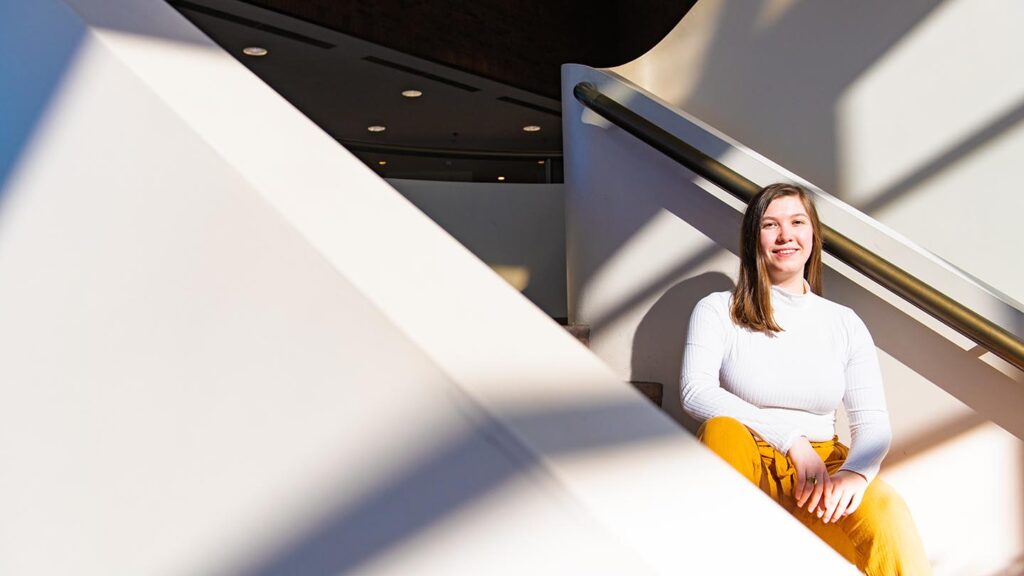
Anna Zittle ’22
Anna Zittle ’22
Math and music
Finding CaPA
While Zittle had heard of CaPA, she wasn’t involved. That changed during her sophomore year in a music composition class when Kirk O’Riordan, associate professor of music, nominated her for the program. At that point she had many musical ideas and was learning to compose but lacked the tools to capture those ideas.
Using CaPA
Zittle used CaPA funds to service her violin, purchase a microphone, and buy composition software. With those tools, she has written close to 40 fragments of music. Seven of those are longer pieces, including two that were performed on campus, one with the spring 2021 Concert Band and another by professional chamber musicians Hub New Music. Currently, Zittle is working on a micro opera as part of her two senior thesis projects (the other is on using statistics for cancer tumor modeling). The premise for that opera is a modern retelling of the love triangle of King Arthur, Guinevere, and Lancelot. She further displays her musical talents as the music director for the student-run theater troupe, Marquis Players.
CaPA Value
“CaPA gives you the freedom to work on projects without having to struggle to find funding, and then pushes you to create work and surrounds you with a community of scholars who support you,” she says.
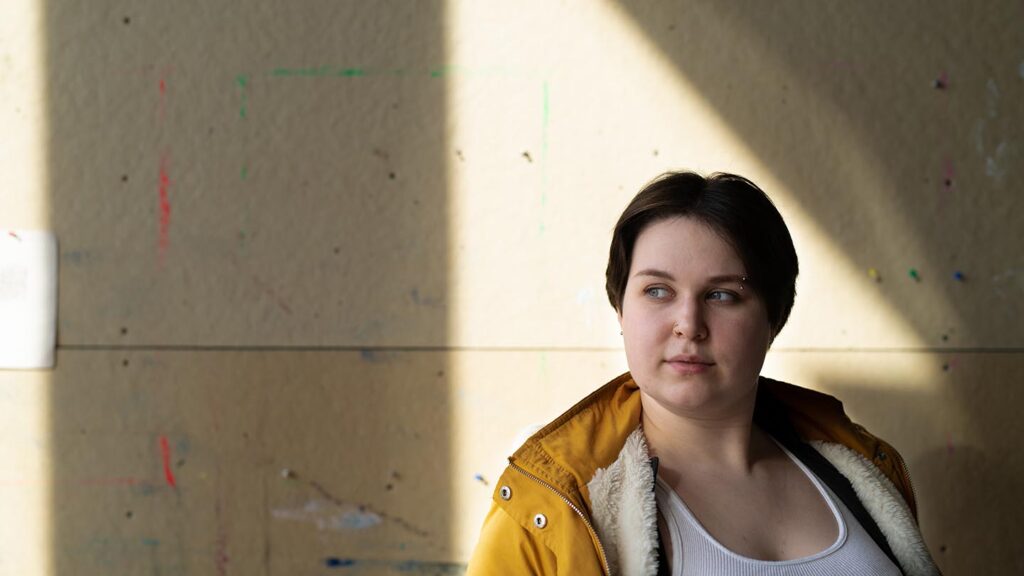
Anastasiia Shakhurina ’22
Anastasiia Shakhurina ’22
International affairs and art
Finding CaPA
During her sophomore year, a conversation with Jim Toia, director of community-based teaching at Lafayette and chair of Karl Stirner Arts Trail, led her to CaPA, excited about the opportunities it would open.
Using CaPA
Shakhurina likes to try new things, which CaPA has fostered. She began with guitar lessons, wanting to learn a new skill and expand her artistic disciplines, but COVID cut that short. She then invested in a drawing tablet as she is interested in digital art making and wants to use her illustrations to develop comic book-type pieces. She also was able to work with Emilio Rojas as a CaPA fellow to support his gallery exhibit and installations, and learn the work that goes on behind the scenes. But she has mostly saved her funding for her senior thesis, where she will build her canvases and work with oil paint. “I don’t have much experience with oil, having used acrylic for years, but oils make more sense with my practice,” she says.
CaPA Value
“It is wonderful to celebrate art and not feel overlooked, to draw on the energy and talents of other scholars who aren’t all art majors, and to gather at events and meals with a like-minded community of creative people,” she says.
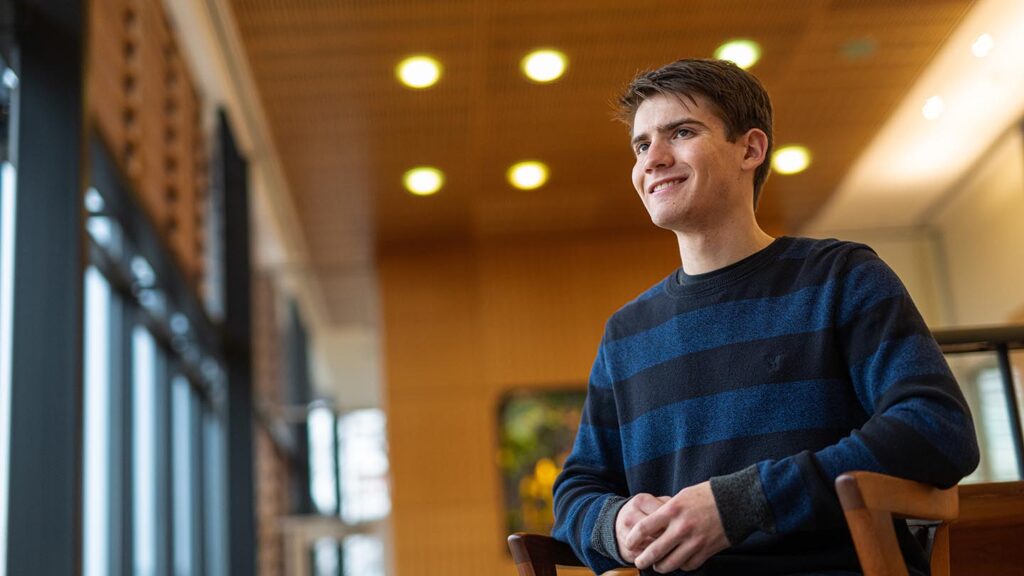
Roman Daniel ’22
Roman Daniel ’22
English and government and law
Finding CaPA
During the spring semester of his first year, Daniel was in a creative writing course with Lee Upton, Emerita Francis A. March Professor of English and Writer-in-Residence, who, unbeknownst to him, submitted his name to the program. When he heard more about it early in his sophomore year, he was all in.
Using CaPA
As a writer, equipment wasn’t a need for Daniel. So he continued to take classes and has honored a pledge to write a page of fiction a day. While some of those pages are small snippets, he has penned one novel and is working on a second. Such diligence has paid off as he recently earned an honorable mention in the 2022 Flash Fiction contest. He hoped to use some of his funds for a study abroad experience, but COVID nixed that plan. Instead, he tapped into another creative passion: WJRH. His weekly radio show, “Sounds like Nonsense,” where he spins deep cuts of new wave, post-punk, metal, and space rock, airs on Sunday afternoons. The radio station wants to host more outdoor concerts, both live music and DJs, so he used some funds to help them obtain speakers, a mixer, and a drum kit.
CaPA Value
“As a writer, you get better slowly all the time,” he says. “So it was nice to be recognized and find a community of artists who are dedicated to a creative pursuit.”
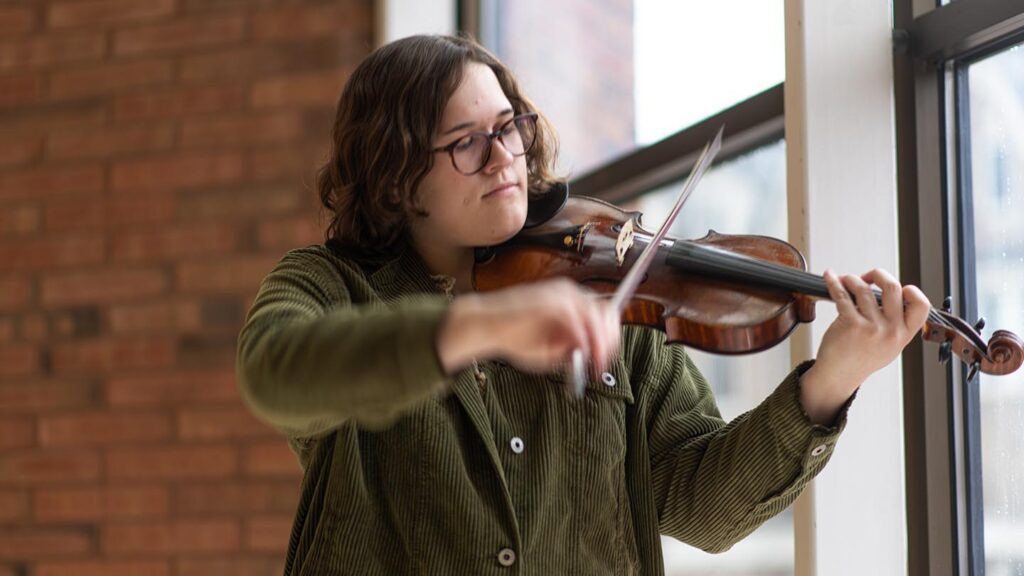
Beth Anne Castellano ’22
Beth Anne Castellano ’22
Math and music minor
Finding CaPA
This math standout didn’t want to lose music when she applied to college. She learned about the CaPA program and was nominated so that she could continue pursuing her passion as a violinist.
Using CaPA
Music is a creative and expressive outlet for Castellano. She has played all four years with the orchestra. CaPA helped make private lessons possible starting in her sophomore year. She played with the Marquis Consort until COVID interrupted those performances. She also performs with the pit orchestra for the Marquis Players and formed a string quartet with another CaPA scholar. The program has made violin repairs and maintenance possible.
CaPA Value
“The CaPA program fosters an environment where students can learn from peers in different areas of the arts community and broaden their horizons,” says Castellano.
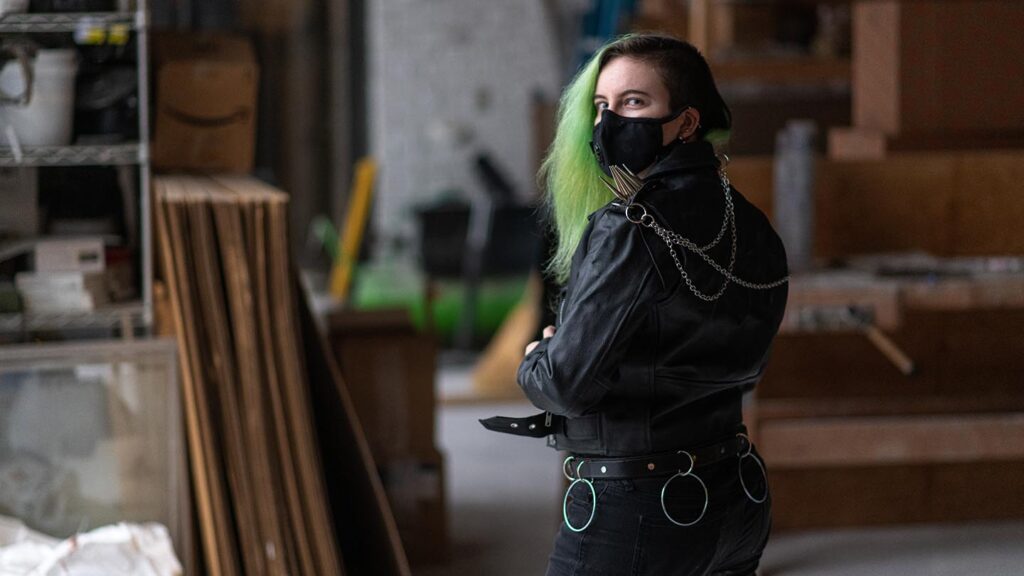
Sadie Graeff ’22
Sadie Graeff ’22
Art
Finding CaPA
Graeff visited campus prior to applying to the College and met with art faculty who made clear that this was the right place and that CaPA would be a great fit. With that supportive nudge, Graeff applied to and was accepted by both the College and program.
Using CaPA
During the start of their first year, they had so many ideas that they became overwhelmed and stalled a bit. When COVID had students learning from home, they used the time to purchase and build a mini at-home studio that included printmaking screens, ink, woodblocks, paper, and 200 pounds of plaster. Graeff returned to campus during their junior year while most remained at home and began working in textiles, like leather and silk, and making body casts. Serving as a teaching assistant in sculpture has kept them busy, both making work and assisting others.
CaPA Value
“I get to introduce a dose of weirdness into Lafayette at large as well as engage in a small but vital community of artists,” says Graeff. “When I arrived here, I was shy and isolated, but the cool people I have met and the events we hold have helped me integrate art into all aspects of my life at the College. I got to sit next to Mr. Maggin, the sponsor for this program, at a meal, and felt like an important part of CaPA’s community. It has let projects I have dreamt about become real.”

Brandon Marin ’22
Brandon Marin ’22
Film and media studies
Finding CaPA
As an early decision candidate to the College and NYC Posse Scholar, Marin had time to discover opportunities like CaPA prior to his arrival on campus, so he applied with the hopes of using the program to support his passion for photography.
Using CaPA
Marin used some funds to purchase a digital camera and then got to work. During his first year, he took photos for the Communications Division as well as The Lafayette. He took every production and technical class he could. He worked as director of photography on several student films. As an intern at a NYC museum, he supported artists with images and website development. Of course, he also focused on a personal project. Using funds his senior year, he traveled back to Ecuador, visiting a country he hadn’t seen since he was 2 years old. Then, he was with his father who was in the final stages of a cancer journey. This most recent visit had him travel to four main cities, meet family members, and document their lives and his experiences. He has a photo book of images and 500 video clips that will become a short documentary and premiere in the spring FAMS showcase.
CaPA Value
“CaPA is more than funding,” he says. “It has unlocked a way for me to memorize and eternalize my life story. The odds for this to happen to me—Lafayette, CaPA, Ecuador—are low, so I feel incredibly lucky.”
